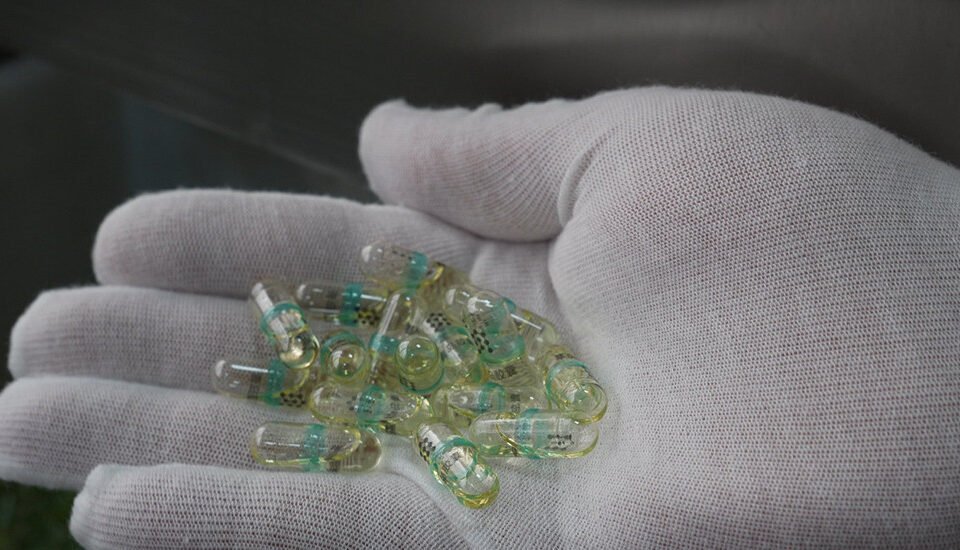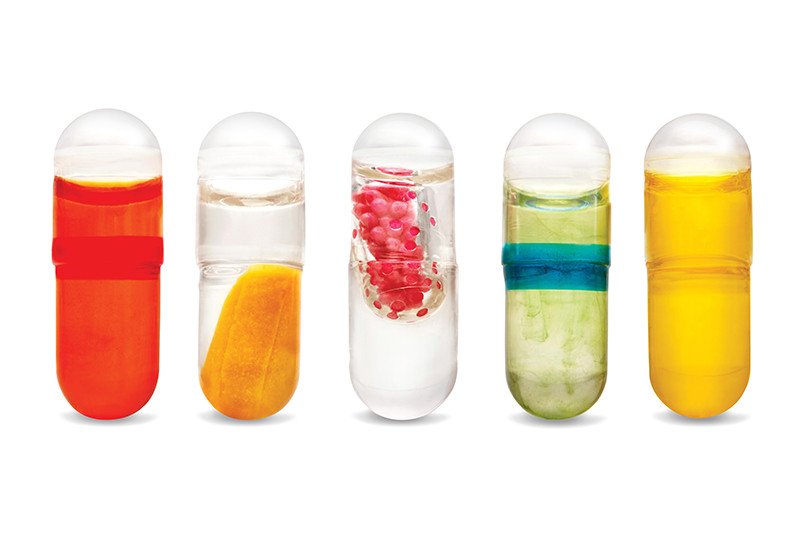
透明ボトルが検査官にとって悪夢となる理由 - ビジョン検査
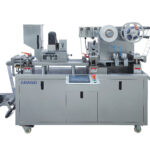
究極のガイド:保護とブリスター包装ソリューション | GrandPack
遅延放出型と腸溶性コーティング型:グランドパックガイド
導入
カプセルを見ると、単なる薬の殻に過ぎないと思われがちです。しかし、医薬品や栄養補助食品の世界では、その小さなパッケージの背後にある技術は驚くほど洗練されています。この技術の重要な側面は、制御にあります。 いつ そして どこ 有効成分が体内で放出されます。 遅延リリース カプセルは、有効性と患者の快適性の両方に大きな利点をもたらします。しかし、この用語はしばしば「腸溶性コーティング」という別の用語と併用されます。これらは同じものなのでしょうか?

端的に言えば「いいえ」ですが、これらの関係性は現代の薬物送達を理解する上で鍵となります。カプセル製造・機器のリーディングカンパニーであるGrandPackが提供するこのガイドでは、遅延放出型と腸溶性コーティング型の違いについて詳しく解説します。これらの用語の意味、重要性、そして精密機械によってどのように実現されているのかを探ります。
遅延放出とはどういう意味ですか?
その核となるのは、 遅延リリース 製剤は、投与直後ではなく、別のタイミングで有効成分(API)を放出するように設計されています。これは、薬のタイムディレイ機構と考えてください。カプセルまたは錠剤は、最初に触れる環境(胃)で溶解するのではなく、消化管(GI)の特定のポイントに到達するまで内容物を保持します。
遅延放出メカニズムの主な目的は、特定の課題を克服することです。これらの課題には以下が含まれます。
- 薬物の保護: 多くの薬剤は敏感で、胃の強い酸性環境によって分解または破壊される可能性があります。遅延放出システムは保護シールドとして機能し、薬剤の全量が腸まで到達し、適切に吸収されることを保証します。
- 胃を守る: 逆に、アスピリンやその他のNSAIDsなどの有効成分は胃の内壁に悪影響を与え、炎症、潰瘍、出血を引き起こす可能性があります。遅延放出製剤は、薬剤が胃で放出されるのを防ぐことで、これらの副作用を最小限に抑え、患者の忍容性を高めます。
- ターゲットを絞ったローカル配信: 特定の症状では、薬が腸内で直接作用する必要があります。例えば、炎症性腸疾患(IBD)の一部の治療薬は、下部消化管の炎症部位に正確に放出されることで最も効果的です。
- 吸収の最適化: 小腸は、その広い表面積と最適なpH値により、多くの化合物にとって薬物吸収の主要な部位です。遅延放出製剤は、APIが最も効率的に血流に吸収される正確な場所に放出されることを保証します。
それで、 "遅延リリース「は 戦略 または 意図有効成分の放出を遅らせるためです。しかし、この戦略はどのように実行されるのでしょうか?そこで腸溶コーティングが役立ちます。
腸溶コーティングの意味:遅延の背後にある技術
遅延リリースが「何」であるならば、 腸溶コーティング 最も一般的な「方法」です。腸溶性コーティング錠またはカプセルは、特定の タイプ 遅延放出型製剤のことです。「腸溶性」という用語自体は腸を指します。したがって、腸溶コーティングは経口薬に塗布される特殊なポリマーバリアで、胃の中ではそのまま残り、小腸の酸性度が低い、またはアルカリ性の環境に到達したときにのみ溶解するように設計されています。
腸溶コーティングはどのように機能するのでしょうか?
その背後にある科学 腸溶コーティングの意味 すべてはpHレベルにかかっています。胃は非常に酸性の強い環境で、pHは1.5から3.5の範囲です。一方、小腸はそれよりはるかにアルカリ性が高く、pHは通常6.0から7.5の範囲です。
腸溶性コーティングは、低pHでは不溶性だが高pHでは可溶性のポリマーで作られています。これらのポリマー、例えばセルロースアセテートフタレート(CAP)やヒドロキシプロピルメチルセルロースフタレート(HPMC-P)などは、酸性の胃の中で閉じたゲートのような働きをします。胃液に効果的に抵抗し、薬剤の早期放出を防ぎます。
カプセルまたは錠剤が胃から十二指腸(小腸の最初の部分)に入ると、周囲のpH値が上昇します。この環境変化が腸溶コーティングの溶解を促します。「ゲート」が開き、有効成分が腸内に放出され、吸収または局所作用が起こります。
代表的な例は オメプラゾール比較すると オメプラゾールの遅延放出型と即放出型違いは決定的です。オメプラゾールは胃酸を抑えるプロトンポンプ阻害剤です。しかし、この薬剤自体は、本来抑制すべき胃酸によって急速に分解されます。そのため、腸溶性コーティングを施した遅延放出カプセルに製剤化されています。このコーティングは、オメプラゾールが胃を通過する際に保護し、小腸に到達して血流に吸収され、胃の酸産生細胞に内側から作用することを可能にします。即放性タイプでは、効果が現れる前に効果が失われてしまいます。
遅延放出型と腸溶性コーティング型:主な違い
主な違いを明確にしてみましょう。
- 遅延放出 幅広いカテゴリーです。有効成分をすぐに放出しないあらゆる製剤を指します。
- 腸溶コーティング 特定の 方法 遅延放出を実現するために使用されます。腸を標的とするpH依存的なメカニズムです。
基本的に、すべての腸溶性コーティング製品は遅延放出型ですが、すべての遅延放出型製品が腸溶性コーティングされているわけではありません。腸溶性コーティングは、この目的において最も一般的な技術ですが、タイマー(膨潤性ポリマーを使用)や消化管の様々な部位に存在する酵素トリガーに基づいて、より複雑なシステムで遅延放出を実現することも可能です。しかしながら、ほとんどの用途において、腸溶性コーティング錠またはカプセルの信頼性の高いpH依存メカニズムがゴールドスタンダードです。
語彙の拡張: 徐放性とはどういう意味ですか?
薬物の放出プロファイルを完全に理解するには、遅延放出と混同されやすい別の用語、持続放出 (SR) と徐放 (ER) を理解することが重要です。
鍵 徐放錠と持続放出錠の違い カプセル剤との違いは微妙ですが、重要なのは持続時間と持続性です。どちらも「徐放性」に分類され、薬の治療効果を持続させ、患者が1日に服用する回数を減らすように設計されています。
- 徐放性(ER): この用語は、製剤が薬剤を長期間にわたって放出し、即時放出型よりも少なくとも 2 倍長く治療濃度を維持するように設計されていることを意味します。 徐放性とはどういう意味ですか 実際にはどうでしょうか?それは薬の量が減り、血液中の薬の濃度がより安定することを意味します。
- 徐放性(SR): これは ER と互換的に使用されることが多いですが、時間の経過に伴って一定 (ゼロ次) の放出率を目指す、安定して制御された放出プロファイルを具体的に意味する場合があります。
遅延放出との決定的な違いは ゴール.
- 遅延リリース目標: 制御する どこ そして いつ リリースが始まります。
- 徐放性/持続放出の目標: 制御する どのぐらいの間 リリースは開始後も継続します。
高度な製剤の中には、胃を経由しないよう腸溶コーティングされたカプセル(遅延放出型)と、腸内に入ると12時間かけて薬剤を放出するペレット(徐放型)を組み合わせたものもあります。
カプセル製造と装置における精度の役割
こうした高度な遅延放出型腸溶性カプセルの製造は単純なプロセスではありません。最先端の技術が必要です。 カプセル製造および設備 すべてのカプセルが設計通りの性能を発揮することを保証するためです。腸溶コーティングは繊細で非常に重要な工程です。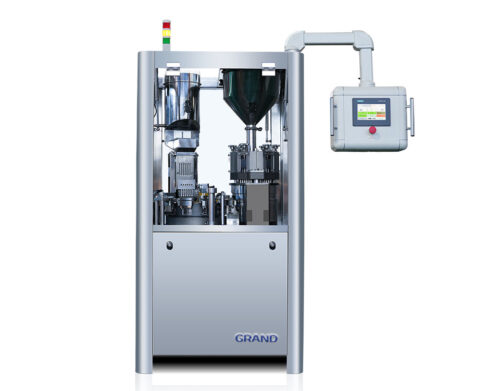
GrandPackのようなメーカーは、このプロセスに不可欠な高度なカプセル充填機とコーティングシステムを提供しています。製造工程を少しご紹介します。
- カプセル充填: まず、 自動カプセル充填機 有効成分の粉末またはペレットを標準的なゼラチンカプセルまたはHPMCカプセルに正確に充填します。この段階での精度は極めて重要であり、充填重量のわずかな変動も投与量の誤りにつながる可能性があります。
- コーティングの用途: 充填されたカプセルはコーティングパンまたは流動床コーターに移されます。 流動床システム正確に制御されたスプレーノズルが液体の腸溶コーティングポリマー溶液を塗布する間、カプセルは加熱された空気の流れの中に浮遊します。
- 乾燥と硬化: の コーティング 均一で途切れのない膜を形成するには、均一に塗布し、注意深く乾燥させる必要があります。この膜の厚さは非常に重要です。薄すぎると胃の中でうまく機能せず、厚すぎると腸内で適切に溶解しない可能性があります。
- 品質管理: 製造工程全体を通して、厳格な品質管理チェックが実施されます。これには、フィルムの厚さ、カプセルの完全性、そして最も重要な溶出プロファイリングの試験が含まれます。溶出試験は消化管の環境をシミュレートし、カプセルが酸性溶液中では無傷のままであり、中性またはアルカリ性溶液中では規定時間内に内容物が放出されることを確認します。
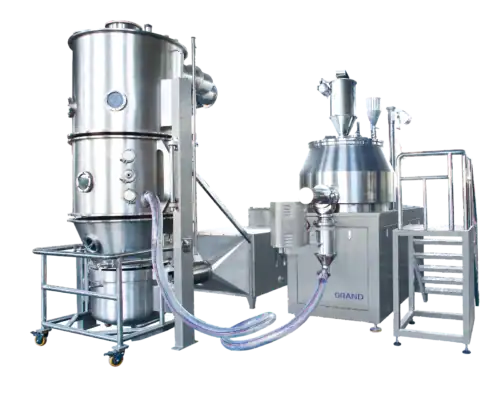
信頼性 腸溶錠とは この製造プロセスの精度に完全に依存しています。GrandPackの機械は、高品質で信頼性の高い遅延放出型医薬品および栄養補助食品の製造に必要な一貫性と制御性を提供するように設計されています。
(よくある質問)カプセル製造について
1. カプセル充填機はどのようにして遅延放出成分の正確な投与を保証するのでしょうか?
高品質の自動カプセル充填機は、精密に設計された投与ディスクとタンピングピンステーションを備えています。これらの部品が連携して均一な密度の粉末「スラグ」を形成し、カプセル本体に充填します。高度なシステムには、リアルタイム重量チェックステーションが組み込まれており、規定の重量範囲外のカプセルを自動的に排除することで、特殊な放出特性を持つ薬剤を含むあらゆる医薬品にとって極めて重要な投与量精度を確保します。
2. 腸溶性コーティング製品の製造にはどのようなタイプのカプセルが使用されますか?
製造業者は主に2つのアプローチを採用できます。1つ目は、標準的なツーピースハードカプセル(ゼラチンまたはHPMC製)に充填し、密封されたカプセルの外側に腸溶コーティングを施す方法です。2つ目は、より現代的なアプローチで、既製の腸溶カプセルを使用する方法です。これらは特殊なカプセル(耐酸性HPMCなど)で、カプセル殻に直接遅延放出特性が組み込まれているため、別途コーティング工程を必要とせず、製造工程を簡素化できます。
3. 即放性製剤と遅延放出製剤の両方に同じカプセル充填機を使用できますか?
はい、もちろんです。カプセル充填機の主要機能は、粉末、ペレット、その他の材料をカプセルに正確に充填することです。放出プロファイル(即時放出、遅延放出、持続放出)は、充填する成分の性質や、その後のコーティング工程によって決まります。GrandPackのような信頼できるメーカーの多用途カプセル充填機は、幅広い粉末やペレットに対応できるため、あらゆる種類のカプセル製剤の製造に適しています。

